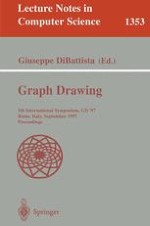1997 | Book
Graph Drawing
5th International Symposium, GD '97 Rome, Italy, September 18–20, 1997 Proceedings
Editor: Giuseppe DiBattista
Publisher: Springer Berlin Heidelberg
Book Series : Lecture Notes in Computer Science
Included in: Professional Book Archive
